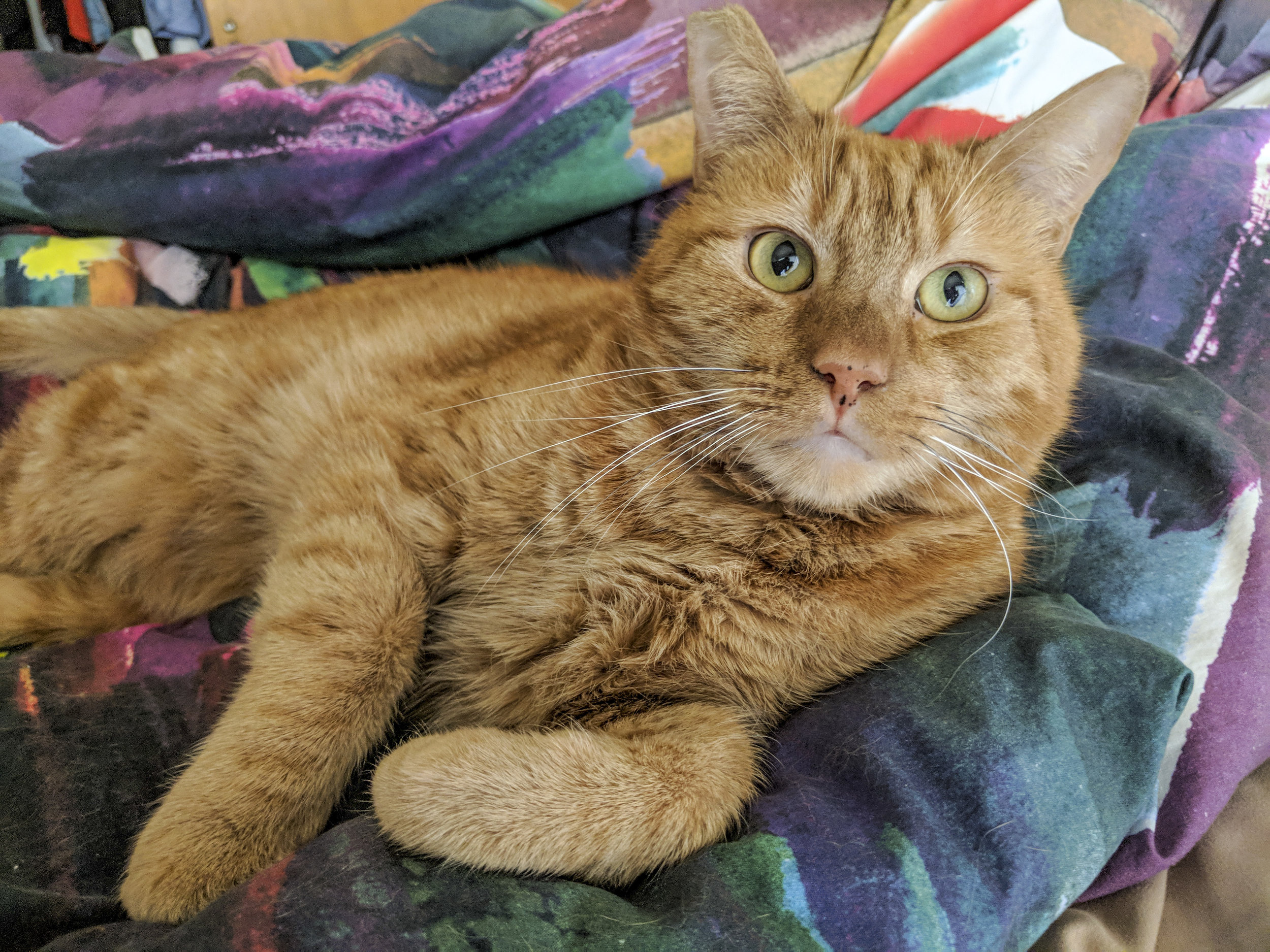Strawberrytabby Leak - What It Means For Digital Privacy
In the fast-paced world of online content, things can sometimes take an unexpected turn. When private material makes its way onto public platforms without permission, it tends to cause quite a stir. This is, you know, a situation that often brings up important conversations about how we all live online and what we expect regarding our personal space. It's a bit like a ripple effect, where one event can send waves across the entire internet.
The recent attention around the "strawberrytabby leak" is one such instance, bringing these very topics into sharp focus for a lot of people. It's a situation that has, more or less, become a talking point for those who follow online content creators and those who simply care about privacy in general. People are, basically, asking a lot of questions about what happened and what it might mean for others.
This kind of event really gets folks thinking about their own digital footprint and how secure their personal information truly is. It tends to be a reminder that what goes online, even if meant to be private, can sometimes end up in places it shouldn't. So, we're going to talk a little about what this particular situation highlights about our online lives.
Table of Contents
- Who is Strawberrytabby?
- What is the Strawberrytabby Leak All About?
- How Do Online Content Leaks Happen?
- What Are the Privacy Concerns with the Strawberrytabby Leak?
- How Does the Public React to a Strawberrytabby Leak?
- Keeping Your Digital Life Safe After the Strawberrytabby Leak?
- A Look at the Broader Picture of Digital Content
Who is Strawberrytabby?
When we talk about someone like strawberrytabby, we are, in a way, talking about a person who creates content for online audiences. The information available suggests that strawberrytabby is an individual involved in creating adult content, often shared on platforms where creators connect directly with their fans. This kind of work involves, you know, putting oneself out there for public viewing, which carries its own set of considerations.
The content associated with strawberrytabby, according to what's been seen, includes various forms of personal videos and pictures. These often feature themes like "big tits," "live" interactions, "onlyfans" material, "dildo" use, "nude" shots, "pussy" and "big ass" displays, and general "babe" imagery. This sort of material is typically created for specific audiences who seek out this kind of entertainment.
Creators like strawberrytabby often use specific online services to share their work and build a following. They might have, say, official profiles where they upload their own content, making it available to those who choose to view it. This is, you know, how many content creators earn a living and connect with people who appreciate their particular style of expression.
It's worth noting that many creators, like strawberrytabby, also use services such as Linktree. This helps them, basically, put all their different online links in one easy-to-find spot. So, fans can find their official OnlyFans page, their social media accounts, or any other platforms where they share their creations. It’s a pretty common way for people to manage their online presence.
Personal Details and Bio Data
| Detail | Information |
|---|---|
| Name/Alias | strawberrytabby |
| Primary Content Type | Adult content, including videos and photos |
| Known Platforms (official) | OnlyFans, Linktree (linking to various sites) |
| Content Themes | Big tits, live, dildo, nude, pussy, big ass, general adult material |
| Status | Content creator/amateur model |
| Official Profiles Mentioned | Pornhub (verified profile), Erome (albums shared by others), Notfans (OnlyFans leaks) |
What is the Strawberrytabby Leak All About?
The term "strawberrytabby leak" refers to a situation where private content belonging to strawberrytabby became publicly available without her permission. This kind of event typically involves material that was either intended for a smaller, private audience, or perhaps even content that was never meant to be shared at all. It's, you know, a pretty serious breach of someone's personal space.
According to the information, this content has appeared on various platforms. Sites like viralxxxporn, pornhub, erome, and notfans have been mentioned as places where this material can be found. These platforms, in some respects, become conduits for the spread of such unauthorized content, whether they intend to or not.
The fact that this material is being referred to as a "leak" tells us that it was not released by the content creator herself. Instead, it suggests that someone gained unauthorized access to her private content and then shared it widely. This is, you know, a key distinction from content that a creator chooses to publish themselves.
A significant part of the discussion around the strawberrytabby leak is about the nature of the content itself. It includes, for instance, videos and pictures that were likely part of her OnlyFans subscriptions or other private collections. The volume of content is also quite large, with mentions of 163 videos being available, which is, basically, a lot of material.
This situation, you see, isn't just about the content; it's about the act of unauthorized sharing. It raises a lot of questions about how personal information, especially private visual content, can be taken and distributed against someone's will. This, pretty much, gets to the heart of digital security and personal boundaries online.
How Do Online Content Leaks Happen?
Online content leaks, like the strawberrytabby leak, can happen for a few different reasons, and it's something that, you know, many people wonder about. Sometimes, it happens when someone gains unauthorized entry into a private account. This could be through, say, guessing a weak password, using stolen login details, or even through more complex methods that exploit security weaknesses.
Another way this kind of material might get out is if a person who had legitimate access to the content decides to share it without permission. This could be, for instance, a former partner, a disgruntled friend, or even someone who paid for the content but then chose to distribute it freely, which is, obviously, not what was intended.
Sometimes, too, content might be accidentally exposed due to a mistake in privacy settings on a platform or a device. While less common for large-scale leaks, a single misstep can, in a way, lead to private files becoming accessible to others. This just goes to show how careful one needs to be with online settings.
It's also possible that a device itself, like a phone or a computer, could be compromised. If someone's device gets hacked, then any private files stored on it could potentially be taken and then, you know, spread around the internet. This is why good cybersecurity practices are pretty important for everyone.
And then there's the possibility of insider threats. This might involve someone who works for a platform or a service gaining access to private user data and then, for whatever reason, sharing it. While platforms usually have strong security measures, these things can, sometimes, still happen.
What Are the Privacy Concerns with the Strawberrytabby Leak?
The strawberrytabby leak brings up some really important questions about personal privacy in the digital space. When private content is shared without permission, it's a clear violation of someone's personal boundaries. This is, you know, a big deal because it takes away a person's control over their own image and how it's used.
For one thing, unauthorized access to private material is against the law in many places. Laws exist to protect individuals from having their personal information, especially intimate content, taken and spread around. Those who are responsible for such a leak could, therefore, face pretty serious legal trouble, which is, naturally, something to consider.
Beyond the legal side, there are big ethical concerns. It's about respecting someone's right to privacy and their autonomy. Sharing someone's private content without their consent is, basically, a betrayal of trust and a disregard for their well-being. It can cause a lot of distress and harm to the person involved.
The leak also highlights how vulnerable anyone can be online. Even if you're careful, there's always a chance that your private information could be exposed. This, you know, makes many people feel a bit uneasy about what they share, even with people they trust, or what they keep on their devices.
Moreover, the long-term effects of a leak like this can be quite significant for the individual. Once something is online, it's very hard to get rid of completely. This means that the person affected might have to deal with the consequences for a long time, which is, obviously, a very difficult situation to be in.
How Does the Public React to a Strawberrytabby Leak?
When a situation like the strawberrytabby leak becomes public, it tends to spark a lot of conversations online. People, you know, often have very strong feelings about these kinds of events, and those feelings can vary quite a bit. You'll see a range of reactions, from support for the person affected to discussions about the nature of online content itself.
A common reaction is public debate. People will talk about the authenticity of the content, whether it's real or not. They'll also discuss the implications of the leak, meaning what it means for the individual involved and for the broader online community. These conversations can, at times, become quite heated.
Some people will express concern for the individual whose privacy has been violated. They might talk about the unfairness of the situation and the harm that can come from such an event. This kind of reaction often comes from a place of empathy and a desire to see justice for the person affected.
Others might discuss the legal and ethical questions that the leak brings up. They might talk about privacy laws, the responsibilities of platforms, and what should be done to prevent similar incidents in the future. This, basically, turns the discussion into something more about policy and online safety for everyone.
Then there are those who might consume the leaked content, which, you know, adds another layer to the public reaction. The very act of viewing or sharing unauthorized material contributes to its spread and can, in a way, compound the harm done to the individual. It's a complex dynamic with many different facets.
Sometimes, discussions around leaks can also involve unrelated or speculative claims. For instance, the source text mentions discussions about "manga" in relation to "the truth about strawberrytabby and the leak." This shows how public conversations can, at times, wander into different areas or include various theories, whether they are directly relevant to the leak or not. It's, pretty much, how information and rumors can spread online.
Keeping Your Digital Life Safe After the Strawberrytabby Leak?
The discussions around the strawberrytabby leak, with all their talk about privacy and online safety, are a good reminder for everyone to think about their own digital presence. It’s, you know, pretty important to take steps to keep your personal information secure online. This is something that applies to everyone, whether you're a content creator or just someone who uses the internet regularly.
One of the simplest things you can do is to use strong, unique passwords for all your online accounts. A good password is, typically, long and includes a mix of different characters. It's also a good idea to use a password manager, which can help you create and remember complex passwords without too much trouble.
Turning on two-factor authentication (2FA) wherever possible is another very good step. This adds an extra layer of security, meaning that even if someone gets your password, they still need a second piece of information, like a code sent to your phone, to get into your account. This is, basically, a powerful way to protect yourself.
Be careful about what you share online, and with whom. Think twice before sending private pictures or videos, even to people you trust. Once something leaves your device, you lose a lot of control over where it might end up. So, it's, you know, better to be a little cautious.
Regularly check the privacy settings on your social media accounts and other online services. Make sure you understand who can see your posts, photos, and personal details. Sometimes, these settings can change, so it's a good idea to review them from time to time to make sure they still match your preferences.
And, of course, be wary of suspicious links or messages. Phishing attempts are still a common way for people to gain unauthorized access to accounts. If something looks too good to be true, or if a message seems a little off, it's probably best to just ignore it. This is, you know, a pretty basic but effective rule of thumb.
A Look at the Broader Picture of Digital Content
The strawberrytabby leak, while specific to one person, really highlights some bigger ideas about how we interact with digital content in general. We live in a time where people create and share a vast amount of material online, from simple social media posts to, you know, more personal videos and photos. This constant flow of information shapes our culture in many ways.
Platforms that allow creators to share their work, like OnlyFans or YouTube, have become very popular. They give individuals a way to connect directly with their audience and, sometimes, to make a living from their creations. This direct connection, in a way, changes how content is produced and consumed, making it feel more personal.
However, with this increased sharing comes the need for a heightened awareness of digital safety and privacy. Every piece of content shared, every profile created, adds to one's online presence. Understanding the risks involved, such as the possibility of unauthorized access or leaks, becomes, you know, more important than ever.
The discussions that follow events like the strawberrytabby leak also show how quickly information spreads across the internet. News, rumors, and opinions can go viral in a very short amount of time, influencing public perception and sparking widespread conversations. This rapid spread can be both powerful and, sometimes, a little overwhelming.
Ultimately, what we learn from situations like this is that digital privacy isn't just about technical safeguards; it's also about collective responsibility. It involves, basically, respecting others' boundaries, understanding the consequences of our actions online, and making conscious choices about what we share and how we interact with content that may have been obtained without permission. It's a continuous learning process for everyone involved in the online world.
This article has explored the situation surrounding the strawberrytabby leak, looking at what the leak entails, how such incidents might occur, and the significant privacy concerns they bring to light. We've also touched on how the public tends to react to these events and offered some general advice on keeping your digital life safe. The broader context of digital content creation and sharing, and the ongoing need for online awareness, has also been a part of our discussion.
Article Recommendations



Detail Author:
- Name : Percival Hudson
- Username : allison.schimmel
- Email : eve51@yahoo.com
- Birthdate : 1983-04-04
- Address : 1496 Howell Freeway Suite 321 Stammville, WI 11756-0039
- Phone : 954-469-9635
- Company : Tillman-Kris
- Job : Rigger
- Bio : Voluptas nam aut sunt eos. Cum repudiandae fuga perferendis quia sed cupiditate. Eius a minima consectetur sint consectetur quaerat reprehenderit. Magnam soluta quibusdam iure eius ut et.
Socials
instagram:
- url : https://instagram.com/nienow1986
- username : nienow1986
- bio : Voluptate qui iste aut quia eum aut. Error voluptas sunt error aut nisi. Dolorem veniam ipsa sunt.
- followers : 5896
- following : 1500
facebook:
- url : https://facebook.com/nienowr
- username : nienowr
- bio : Ab sed dolorem libero inventore. Culpa magnam ea cum est ut.
- followers : 6860
- following : 2970
linkedin:
- url : https://linkedin.com/in/nienow1986
- username : nienow1986
- bio : Deleniti natus iure vel sit accusamus qui.
- followers : 2295
- following : 2709
tiktok:
- url : https://tiktok.com/@rafaela8093
- username : rafaela8093
- bio : Numquam voluptatem aliquid ducimus illum architecto.
- followers : 1845
- following : 1939